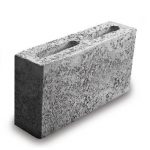
What are Chippings?
They are referred to as small rock fragments or stones that are typically between 3mm to 63mm in size. They are sourced from various natural materials, including granite, limestone, basalt, and even recycled concrete. These materials are crushed and screened to produce the desired size and shape.
Features of Chippings:
- Size Variation: They are in various sizes, allowing for versatility in different applications. They can range from fine particles to larger stones depending on the intended use.
- Color Options: The natural color of chippings depends on the source material. Granite chippings, for example, can be grey, pink, or brown. This variety allows for aesthetic customization in landscaping projects.
- Durability: Quality chippings are durable and resistant to weathering, ensuring they maintain their structural integrity over time. This is especially important for outdoor applications exposed to the elements.
- Texture: They have a textured surface that provides traction, making them suitable for use in driveways, walkways, and other surfaces where slip resistance is crucial.
Importance of Chippings:
- Structural Support: They are commonly used as a base material for roads and pathways, providing structural support and stability.
- Aesthetics: In landscaping, they enhance the visual appeal of outdoor spaces. They can be used to create decorative patterns, define borders, or complement plantings.
- Water Drainage: The porous nature of chippings allows for water drainage, preventing waterlogging and promoting soil health in gardens and other landscaping projects.
- Erosion Control: They can be strategically placed to control soil erosion, especially in sloped areas.
How to identify Quality Chippings:
- Size Consistency: Quality chippings have a uniform size, ensuring a smooth and even surface. Inconsistent sizes may affect the stability and aesthetic appeal of the finished project.
- Cleanliness: High-quality chippings are free from impurities, debris, and dust. Clean chippings contribute to a more attractive and long-lasting surface.
- Color Uniformity: If using chippings for decorative purposes, look for uniform color. Inferior chippings may have variations that can affect the overall aesthetics.
- Hardness: Quality chippings should be hard and resistant to crushing. Testing the hardness can be done by applying pressure or using a hardness testing device.
- Durability Testing: Assess the resistance of the chippings to wear and tear. A durable material will withstand the impact of traffic, weather, and other external factors.




